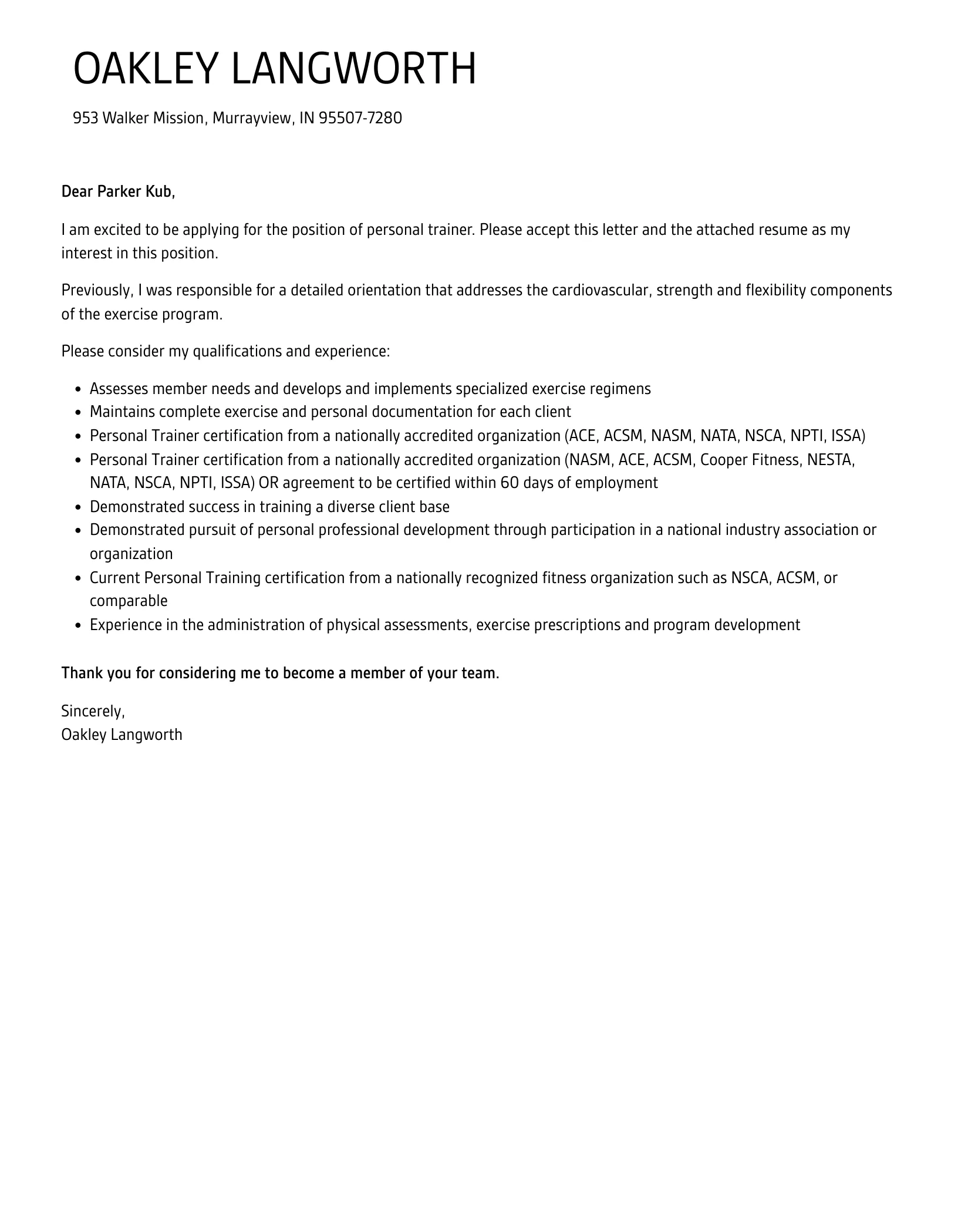Landing your dream job as a personal trainer starts with a stellar cover letter. A well-crafted cover letter is your first impression, a chance to showcase your passion, skills, and experience to potential employers. It’s not just a formality; it’s your opportunity to stand out from the crowd, highlighting why you’re the perfect fit for the role and the gym. In a competitive field, a strong cover letter can be the key to unlocking the door to your future. This guide reveals the secrets to writing a cover letter that grabs attention and gets you interviews.
Why Your Personal Trainer Cover Letter Matters
Your cover letter offers a platform to present yourself beyond the confines of your resume. It’s where you can tell your story, explain your motivations, and connect with the hiring manager on a personal level. Unlike a resume, a cover letter allows you to demonstrate your personality, enthusiasm, and genuine interest in the position and the gym itself. It gives you space to elaborate on your qualifications, providing context and depth that a resume alone cannot achieve. A compelling cover letter significantly increases your chances of securing an interview.
Highlight Your Skills & Qualifications
Your cover letter is your chance to shine a spotlight on your skills and qualifications. Focus on the strengths that directly relate to the personal trainer position you’re applying for. Don’t just list skills; provide specific examples of how you’ve used them to help clients achieve their fitness goals. This includes demonstrating your knowledge of exercise physiology, nutrition, and program design. Highlight any specialized training or certifications that set you apart from other applicants. Make sure you also showcase your communication, motivational, and interpersonal skills, which are essential for building client relationships.
Certifications and Specializations
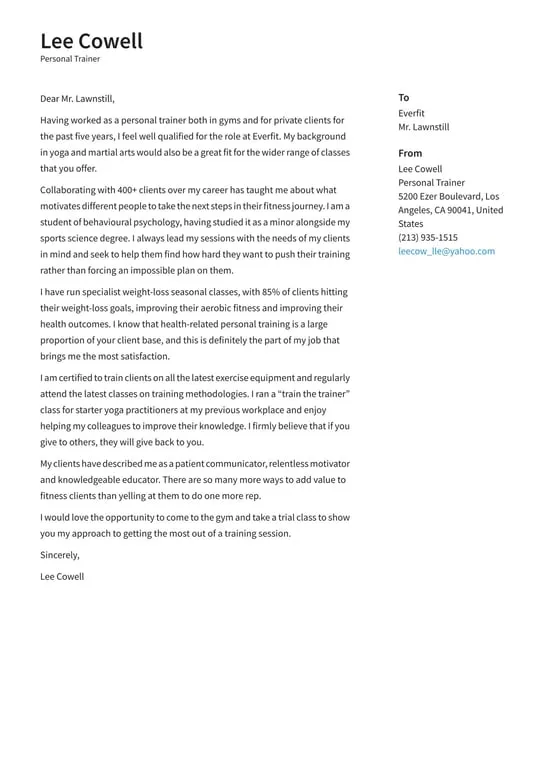
Include all relevant certifications, such as those from NASM, ACE, ACSM, or ISSA. Mention any specializations you have, like weight management, sports performance, or pre- and postnatal fitness. Emphasize how these certifications and specializations allow you to provide superior service and cater to a diverse clientele. Detail how you stay current with industry best practices and continue your professional development to ensure you’re offering the most effective and up-to-date training methods.
Experience and Achievements
Provide a concise overview of your experience. Focus on the most relevant aspects, such as the number of years you’ve worked as a personal trainer, the types of clients you’ve worked with, and the settings in which you’ve trained. Quantify your achievements whenever possible. For example, “Increased client muscle mass by an average of 15% in three months.” or “Consistently maintained a client retention rate of 90%.” Showcasing concrete accomplishments makes a strong impression, illustrating your capability to deliver results.
Showcase Your Passion for Fitness
Your cover letter should demonstrate your passion for fitness and your commitment to helping others achieve their health and wellness goals. Convey your enthusiasm for the profession and your belief in the transformative power of exercise. Share your personal fitness journey or what drew you to become a personal trainer. This authentic expression of passion is a great way to connect with the hiring manager and show them that you aren’t just looking for a job, but a career you are dedicated to.
Demonstrating Client Success Stories
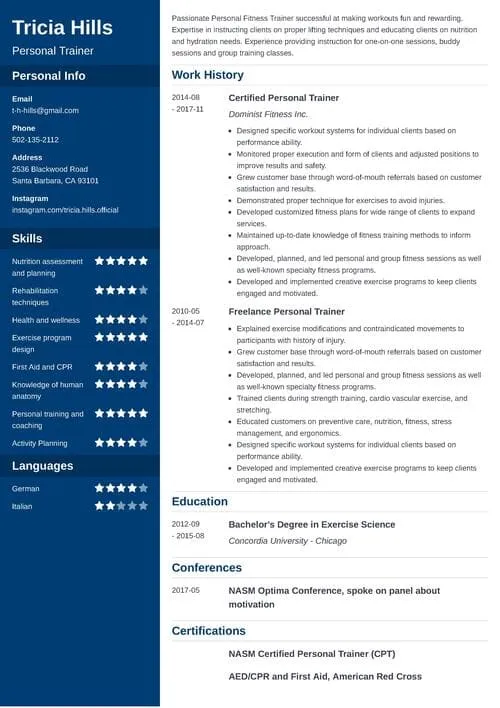
Include a brief, compelling success story of a client you’ve helped. Focus on the challenges they faced, the steps you took, and the positive outcomes they achieved. This could be weight loss, increased strength, improved endurance, or a significant change in their overall well-being. This tangible evidence shows the potential employer that you have a proven track record of helping people, which makes you a valuable asset to the gym. Ensure that you have client consent before sharing any private information.
Quantifiable Results
Use numbers to illustrate your impact. For example, “Helped clients lose an average of 20 pounds” or “Increased clients’ strength by 30%.” Numbers are powerful because they provide solid evidence of your expertise. The more quantifiable the results, the better. Providing specific data offers concrete proof of your abilities and can significantly elevate your cover letter. Be sure that all the information you provide is accurate and verifiable.
Tailor Your Cover Letter to the Gym
Generic cover letters are easily spotted and often ignored. To truly stand out, you must tailor your cover letter to each specific job and gym. Show the hiring manager that you understand their brand and the role, and that you’re genuinely interested in being a part of their team. This personalization demonstrates that you’ve taken the time to do your homework and genuinely want to be a part of their organization.
Research the Gym’s Needs
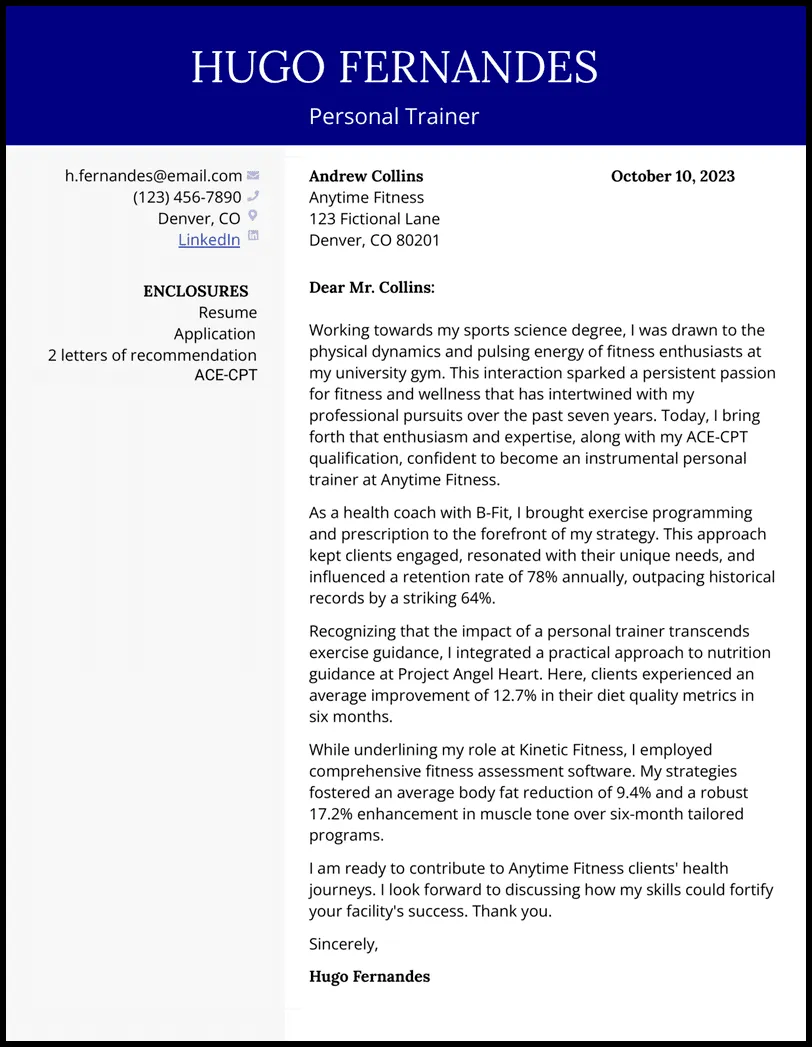
Before writing, research the gym thoroughly. Visit their website, social media pages, and read online reviews. Identify their target clientele, their training philosophy, and any unique programs they offer. This knowledge helps you align your skills and experience with their specific needs. Understanding the gym’s culture and values allows you to craft a cover letter that demonstrates you are a good fit.
Match Your Skills to Their Requirements
Carefully review the job description and pinpoint the key skills and qualities the gym is looking for. Then, in your cover letter, explicitly mention how your skills and experience align with those requirements. Use the same keywords and phrases from the job description, but be sure to integrate them naturally. This targeted approach shows that you not only meet their needs but also have taken the time to understand their expectations.
Formatting Your Personal Trainer Cover Letter
The format of your cover letter is just as important as its content. A well-formatted cover letter is easy to read and professional. Use these tips to ensure your cover letter makes the best possible impression.
Proper Structure and Layout
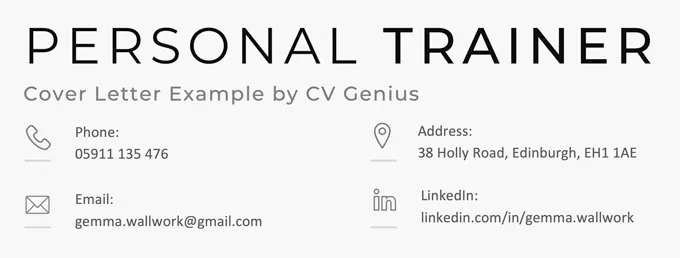
Structure your cover letter logically with a clear introduction, body, and conclusion. Keep each section focused and concise. Use short paragraphs and bullet points where appropriate to make your points clear and easy to read. The layout should be clean, with adequate white space to avoid a cluttered look. This will make your cover letter visually appealing, encouraging the hiring manager to read it thoroughly.
Font and Readability
Choose a professional and readable font such as Arial, Calibri, or Times New Roman. Use a font size between 11 and 12 points. Ensure consistent formatting throughout the document. Poor formatting can make your cover letter difficult to read and can reflect poorly on your attention to detail. Proper formatting is essential for a professional appearance.
Call to Action: Get an Interview
Your cover letter should always include a clear call to action. Let the hiring manager know that you want an interview. Make it easy for them to contact you by providing your phone number and email address, and expressing your availability for an interview. This simple step shows your enthusiasm and proactive approach, which can significantly increase your chances of being selected for the next stage in the hiring process.
Express Enthusiasm and Availability
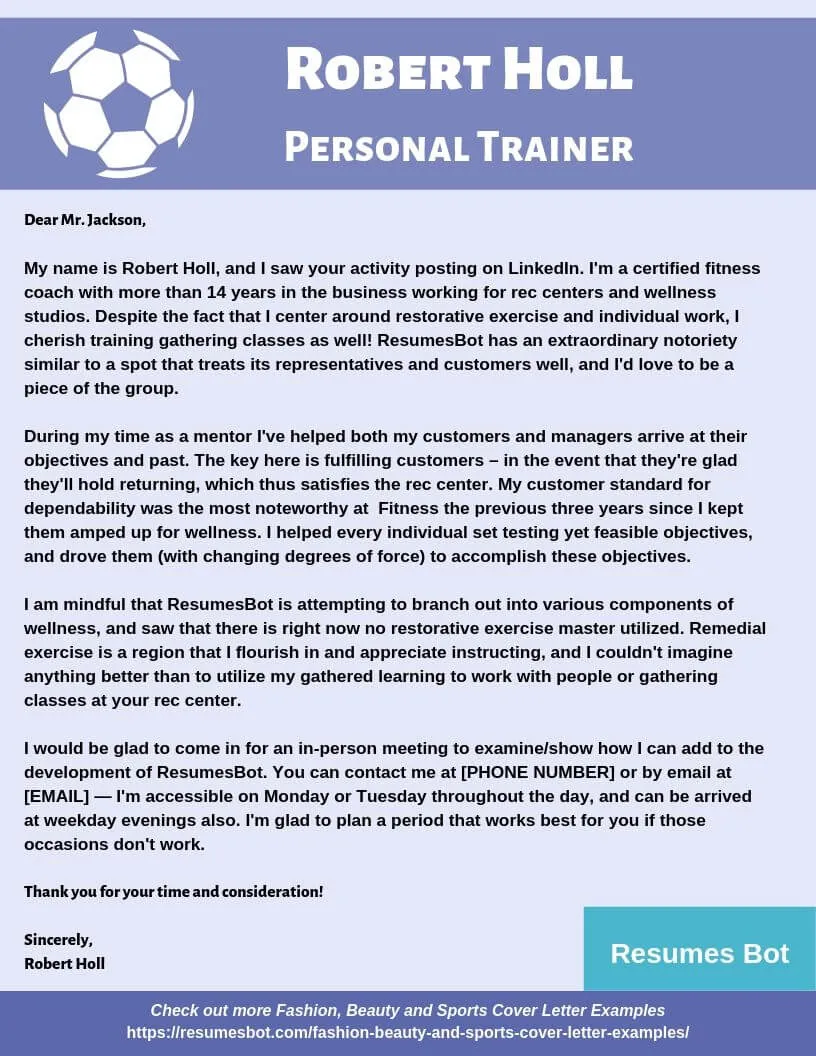
End your cover letter with a statement that clearly expresses your interest in the position and your availability for an interview. You might say something like, “I am very excited about the opportunity to join your team and am available for an interview at your earliest convenience.” This closes your letter on a positive note and reinforces your interest.
Proofread and Edit Carefully
Typos and grammatical errors can quickly undermine your credibility. Always proofread your cover letter multiple times. Ask a friend or colleague to review it as well, as a fresh pair of eyes can often catch mistakes you’ve missed. Ensure that your language is clear, concise, and free of errors. A polished, error-free cover letter demonstrates professionalism and attention to detail.
Common Mistakes to Avoid
Avoid these common pitfalls to ensure your cover letter makes a positive impression.
Generic Cover Letters

Never use a generic, one-size-fits-all cover letter. As discussed earlier, tailor each cover letter to the specific job and gym. Generic cover letters often lack the specificity and personalization needed to stand out. Show the hiring manager that you have taken the time to understand their specific needs and expectations.
Ignoring the Gym’s Needs
Failing to address the gym’s specific needs is a major mistake. Always align your skills and experience with the requirements outlined in the job description. Neglecting to research and highlight the relevant skills can make you seem uninterested or unqualified. Make sure to emphasize the aspects of your background that directly relate to the role.
Typos and Grammatical Errors
Typos and grammatical errors can damage your credibility. Proofread meticulously and have someone else review your letter. Errors can undermine your professionalism and suggest a lack of attention to detail. Take the time to ensure your cover letter is perfect before submitting it.
In conclusion, a well-crafted personal trainer cover letter is crucial for getting noticed. By highlighting your skills, passion, and achievements, you can make a strong first impression and secure an interview. Remember to tailor your letter to each gym, and always proofread carefully. By following these secrets, you’ll be well on your way to landing your dream job in the fitness industry. Good luck!
